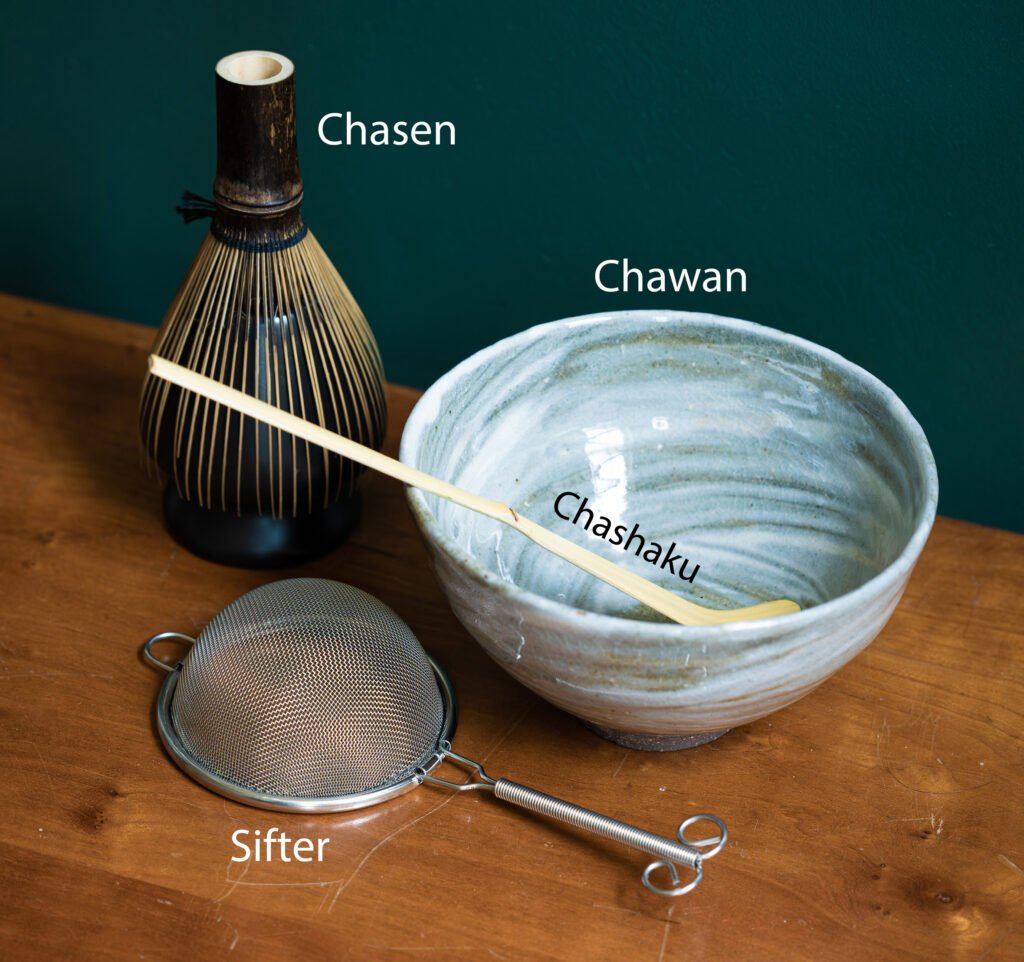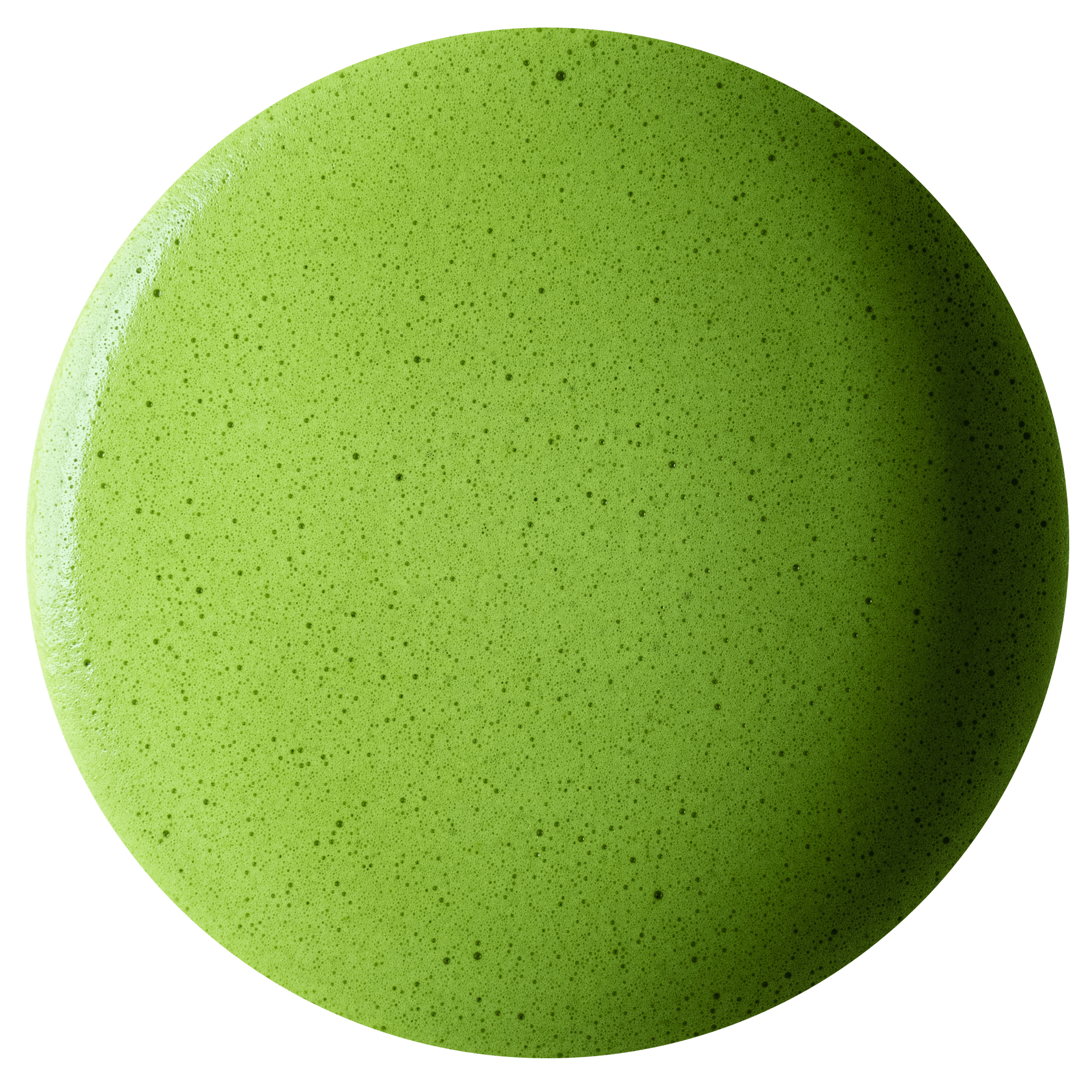Preparing matcha is incredibly simple and requires very few (and inexpensive!) tools. In this post, I’ll introduce the tools you need to make the best bowl of matcha, and the steps required.

What You’ll Need to Prepare Matcha
- Chasen (a bamboo whisk)
- Chawan (a bowl)
- Chashaku (a bamboo scoop)
- Sifter
What if I don’t have a chasen: A chasen is the best tool for creating a nice thick froth, but if you don’t have one, check out my guide for How To Make Matcha without a Whisk. For help selecting a matcha whisk, I have just the thing for you: Matcha Whisk Buying Guide.
What if I don’t have a chawan: A specialized matcha bowl really isn’t necessary. Any bowl will do. I do recommend however that you use one with a flatter shape and wider mouth as this will give you more room to whisk. For suggestions on the perfect matcha bowl check out my Matcha Bowl Buying Guide.
What if I don’t have a chashaku: To be honest, a chashaku serves no purpose other than making you feel fancy. In fact, I often find myself reaching for a long-handled teaspoon for convenience and more precise measurements.
What if I don’t have a sifter: A sifter will greatly improve the smoothness of your matcha, but you can still make matcha without one. This is the sifter I use.
What that out of the way, start heating your water to 70C-80C (158F-176F) and read on! (I would be remiss if I didn’t plug The Impact of Water Quality on Matcha Flavor (post coming soon))
1. Soak Your Whisk

The first, and often overlooked step in making matcha is soaking your whisk. Pour the heated water into your bowl and place the whisk inside. Leave the chasen in the water for about a minute before removing and wiping the bowl dry.
Soaking the chasen in warm water serves multiple purposes.
- Softens the bamboo tines which prolongs the life of your whisk by minimizing breakage.
- Saturates the bamboo with water which prevents the whisk from absorbing green matcha water.
- Warms your bowl to improve heat retention.
2. Measure Out 2g of Matcha

There is no “correct” amount of matcha to use, but I find 2 grams of matcha yields the best results. 2g of matcha can be approximated by 1 level teaspoon or 2 almond size chashaku scoops. Like I mentioned earlier, I prefer using a teaspoon over the traditional chashaku due to its increased precision.
3. Sift the Matcha

Sifting, while optional, greatly improves the smoothness and mouthfeel of the matcha. Matcha is a suspension rather than an infusion. When we make matcha, the fine micron sized particles are left hanging in the water as opposed to dissolving. The less clumpy the matcha, the more uniform the suspension, and the better the final product.
4. Kneed Matcha into a Paste

Pour a small amount of heated water (about 30ml) into your bowl and kneed it slowly in a circular motion with the whisk. This helps ensure better suspension. If making koicha (thick tea) you can stop here and enjoy! However, if making the more common usucha (thin tea), continue on.

5. Whisk

Add 30ml more of water (for 60ml total) to your bowl and whisk until a layer of foam sits on the surface.
Some tips for good whisking:
- First scrap the bowl with the whisk to get all the matcha paste off the bottom.
- Then transition into a up and down or “W” motion with the whisk while lifting it slightly off the bottom of the bowl. Keep a loose, relaxed wrist!
- Maintain this whisking motion for about 20 seconds or until a layer of foam sits on the surface. I’ve heard a saying that “good matcha is whisked 100 times”. In other words, eer of the side of too much whisking rather than too little.
6. Enjoy!

If making a latte pour into your milk of choice. Otherwise, enjoy!
Video Tutorial
For my more visual learns here’s a quick video highlighting all the steps mentioned above.
FAQ
Q: I can’t get a good froth.
The most common reason for lackluster froth is an incorrect matcha to water ratio. I find using 1 teaspoon of matcha and 60ml of water is the right balance to get a good foam.
If still struggling the problem may instead be water temperature. The cooler the water, the harder it will be to generate foam. It’s a balance because too hot water will burn the matcha. I find 158F-176F to be the sweet spot.
If still no luck it may be your chasen. Check out my Matcha Whisk Buying Guide to see if your whisk could be the problem.
Q: The matcha tastes too bitter/astringent.
Using boiling water can burn the matcha and result in an unpleasant bitter taste. Try using cooler water to see if that yields better flavor results. Cooler water also tends to bring out the sweeter flavors in matcha.
If the matcha still tastes unpleasant it could be time to explore different matcha powders. Lucky for you, I have a guide dedicated to My Favorite Matcha on a Budget!
